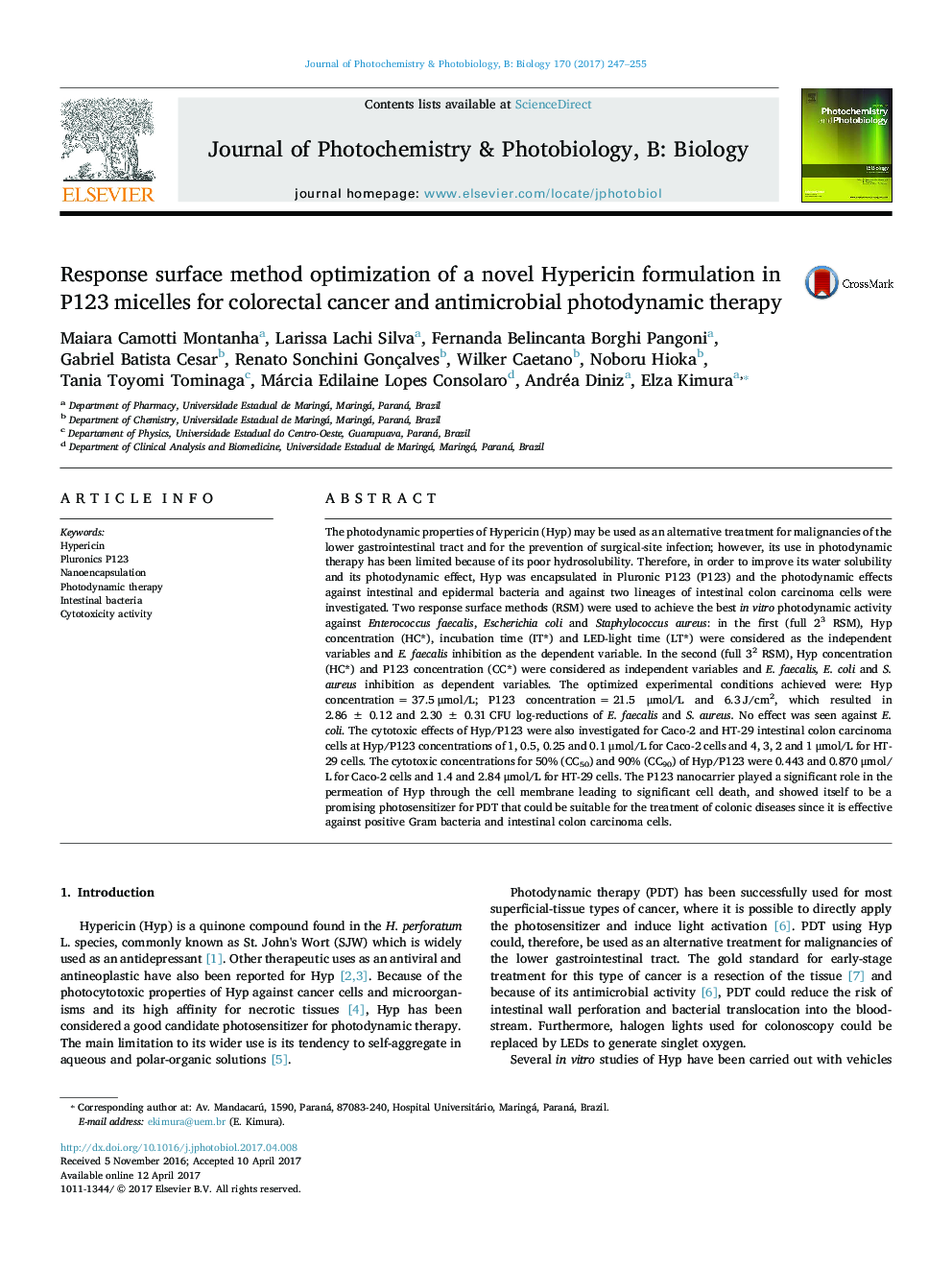| کد مقاله | کد نشریه | سال انتشار | مقاله انگلیسی | نسخه تمام متن |
|---|---|---|---|---|
| 4754486 | 1418063 | 2017 | 9 صفحه PDF | دانلود رایگان |

- Nanoencapsulation of Hypericin with P123 for photodynamic therapy is proposed.
- Response surface method enabled the best proportion of the Hyp/P123 concentration.
- The Hyp/P123 formulation photoinhibited GÂ + bateria E. faecalis and S. aureus.
- The new formulation is cytotoxic to colon cancer Caco-2 and HT-29 cells.
The photodynamic properties of Hypericin (Hyp) may be used as an alternative treatment for malignancies of the lower gastrointestinal tract and for the prevention of surgical-site infection; however, its use in photodynamic therapy has been limited because of its poor hydrosolubility. Therefore, in order to improve its water solubility and its photodynamic effect, Hyp was encapsulated in Pluronic P123 (P123) and the photodynamic effects against intestinal and epidermal bacteria and against two lineages of intestinal colon carcinoma cells were investigated. Two response surface methods (RSM) were used to achieve the best in vitro photodynamic activity against Enterococcus faecalis, Escherichia coli and Staphylococcus aureus: in the first (full 23 RSM), Hyp concentration (HC*), incubation time (IT*) and LED-light time (LT*) were considered as the independent variables and E. faecalis inhibition as the dependent variable. In the second (full 32 RSM), Hyp concentration (HC*) and P123 concentration (CC*) were considered as independent variables and E. faecalis, E. coli and S. aureus inhibition as dependent variables. The optimized experimental conditions achieved were: Hyp concentration = 37.5 μmol/L; P123 concentration = 21.5 μmol/L and 6.3 J/cm2, which resulted in 2.86 ± 0.12 and 2.30 ± 0.31 CFU log-reductions of E. faecalis and S. aureus. No effect was seen against E. coli. The cytotoxic effects of Hyp/P123 were also investigated for Caco-2 and HT-29 intestinal colon carcinoma cells at Hyp/P123 concentrations of 1, 0.5, 0.25 and 0.1 μmol/L for Caco-2 cells and 4, 3, 2 and 1 μmol/L for HT-29 cells. The cytotoxic concentrations for 50% (CC50) and 90% (CC90) of Hyp/P123 were 0.443 and 0.870 μmol/L for Caco-2 cells and 1.4 and 2.84 μmol/L for HT-29 cells. The P123 nanocarrier played a significant role in the permeation of Hyp through the cell membrane leading to significant cell death, and showed itself to be a promising photosensitizer for PDT that could be suitable for the treatment of colonic diseases since it is effective against positive Gram bacteria and intestinal colon carcinoma cells.
122
Journal: Journal of Photochemistry and Photobiology B: Biology - Volume 170, May 2017, Pages 247-255